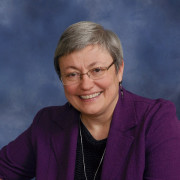Looking Toward Tomorrow: Learning From Yesterday
The Church Board gathered on Saturday, February 27, at the Dyck Arboretum for their annual retreat—for a time of looking ahead toward the year to come. On that day, Pastor Joel Schroeder led us in a time of thinking about vision and mission statements, about why they’re important, what they mean, and why it’s time for us here at First Mennonite Church to articulate what we’re looking forward to in the years to come.
Pastor Joel helped us to think about what distinguishes “vision” from “mission.” The vision of a church or organization is the “being” statement: Our vision is who we want to be and—more importantly—whom God is calling us to be. The mission of a church or organization is the “doing” statement: Our mission directs us in the ways that will help us become whom we are called to be. One analogy might be that vision is like the mountain that we want to get to. Mission is the path we take to get there.
The statement we currently use is this one: We want “to glorify God through expressing our love to God in worship, through experiencing love in Christian community, and through extending God’s love to the world.” If we use the definition above, then we might call this our vision statement: We want to be a congregation that glorifies God in everything that we do. We do not currently have, however, a statement that tells us how we’ll get there.
Going into our retreat on that Saturday in late February, our assumption was that we would not change our current statement but that we would work on a new mission plan to add to what we already have. However as the morning unfolded—as conversation took place about what we celebrate in our past, where we are in the present, and what we hope for in the future—it became clear that we were talking more on the “vision” level than on the “mission” level. So our plan has changed: over the year to come, we will all be working together to develop both a vision and a mission statement. We will be articulating who we want to be and how we plan to get there.
At the Spring Congregational Meeting on April 17, Pastor Joel will introduce the process that we will be entering into in the months to come. You will have an opportunity that day (and in the weeks after) to share what you celebrate about FMC from our past. Later, then, we’ll use what we learn from our past as a foundation from which to look at where we are now and to dream God’s dream for our future. Our goal is to be able to affirm new vision and mission statements at our Fall Congregational Meeting.
We ask you to pray ahead of time and throughout this process for our congregation and for our discernment, wisdom, and openness to the Holy Spirit’s movement and leading so that we may be faithful to the way of Jesus in our world.
With thanks for each of you and with anticipation for the ways in which God will lead us—
Pastor Anita Kehr (for all the pastors)

 Anita Kehr, pastor, gave the following report at the All-Commissions/Committees Retreat on January 30, 2016. She was asked to share it now with you through Connections.
Anita Kehr, pastor, gave the following report at the All-Commissions/Committees Retreat on January 30, 2016. She was asked to share it now with you through Connections.